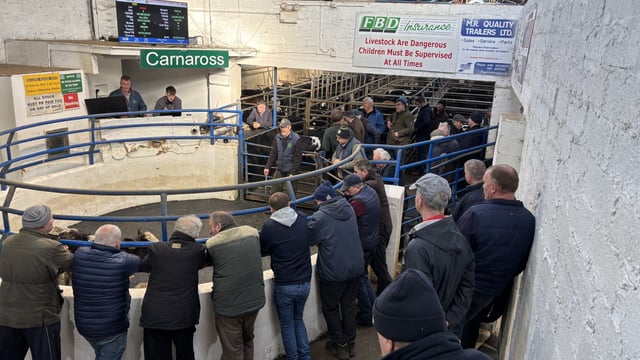What are the best practices when drying-off this month?
Farmers will be preparing to dry-off heifers and under-conditioned cows over the next two weeks considering February is only 11 short weeks away.
Most farmers do not think about drying-off procedures until it is time to actually carry out the task, as they follow the same routine year in and year out with the mindset that it is a straightforward task.
However, if farmers are not prepared before drying-off commences, they could face some difficulties in the following lactation.
Animal Health Ireland (AHI) recently held a webinar for farmers highlighting the top 10 tips for a successful dry-off ahead of the dry period.
Successful dry-off
The majority of cows need a minimum of six weeks dry, but farmers should aim to give them eight weeks to build energy reserves and condition before calving.
Cows which are under conditioned with a body condition score (BCS) below 3.0 to 3.25 at drying off may need up to 10 weeks to fully recover; the same goes for first lactation heifers.
If they do not get this time, they are liable to a difficult calving, and will end up in a negative energy balance post-calving which will in turn deplete their production.
Therefore, early planning is required to ensure you have a successful start to the milking season next year.
During the AHI webinar, Frank O'Sullivan, a vet from Co. Meath interviewed farmers, Laura and David Hannon.
David Hannon told O'Sullivan that he begins preparing for drying-off around the time of St. Patrick's Day in March, when he carries out the first milk recording of the year.
This allows him to understand how the previous dry period progressed, and see where they need to improve for the coming season.
The webinar also highlighted the importance of milk recording since the new legislation came into place in 2022, effectively ending blanket antibiotic treatment dry-offs in a bid to tackle antimicrobial resistance.
Without milk recording, farmers essentially are working blind when using selective dry cow therapy, which as a result may cost more than the €10-€17 per cow it costs to milk record in the first place.
Previous Teagasc studies have shown that herds being milk recorded have approximately €39 higher of a gross margin in comparison to those that don't, with higher yielding cows producing less somatic cell count (SCC).
By reviewing the results from these milk recordings, you can determine which cows may need to be culled, which cows should be dried off early to rebuild tissue in the udder, and which cows will and will not need antibiotic treatment.
Best practices
Once these results have being recorded and read to suit dry-off and cull cow strategies, farmers must begin to plan around the best practices when drying-off.
Farmers need to be aiming to dry cows at a production level of 9L per cow/day, however with some farmers still pushing to finish out the rotation and supplementing with concentrates, a lot of the herd may be up around, if not over, the 12L/day mark.
It is important to quickly reduce that production level for any cows ready for dry-off by ceasing concentration feed and moving to once-a-day milking.
Before bringing cows in for drying-off, you need to ensure hygiene is at a top standard by thoroughly cleaning housing, holding yards, milking parlour and even the cows themselves.
Milk the cows as usual in the morning and carry out Californian milk testing (CMT), then draft them out in small batches afterwards to be dried off, ensuring you have enough help for the task.
Use a pair of white gloves to show up any dirt, thoroughly wash all teats and sterilise with a cotton ball and surgical spirits.
The front two teat (furthest away) should be sterilised first to avoid any contamination, followed by the back two, then the tubes should be administered starting with the back two and working to a front two in a routine pattern.
Do not touch the nozzle of the tubes when opening them; once opened insert into the teat canal, remember antibiotics should be massaged into the quarter but teat sealant should not.
Dip all teat after sealing, then leave cows in a clean dry yard for at least 30 minutes while the teat seal, before heading to clean housing.
Remember, hygiene and patience are the most important factors to maintain during drying-off.





